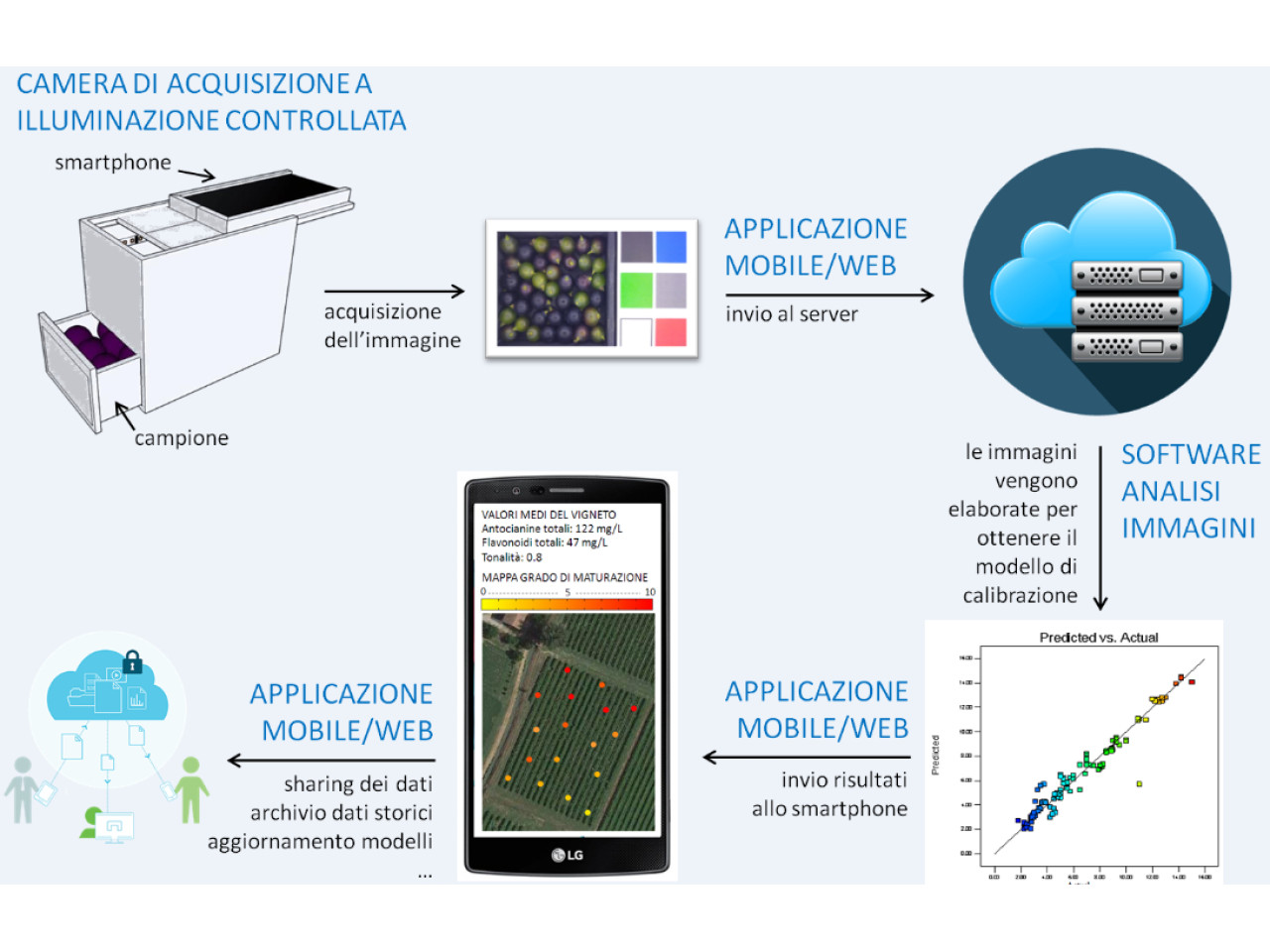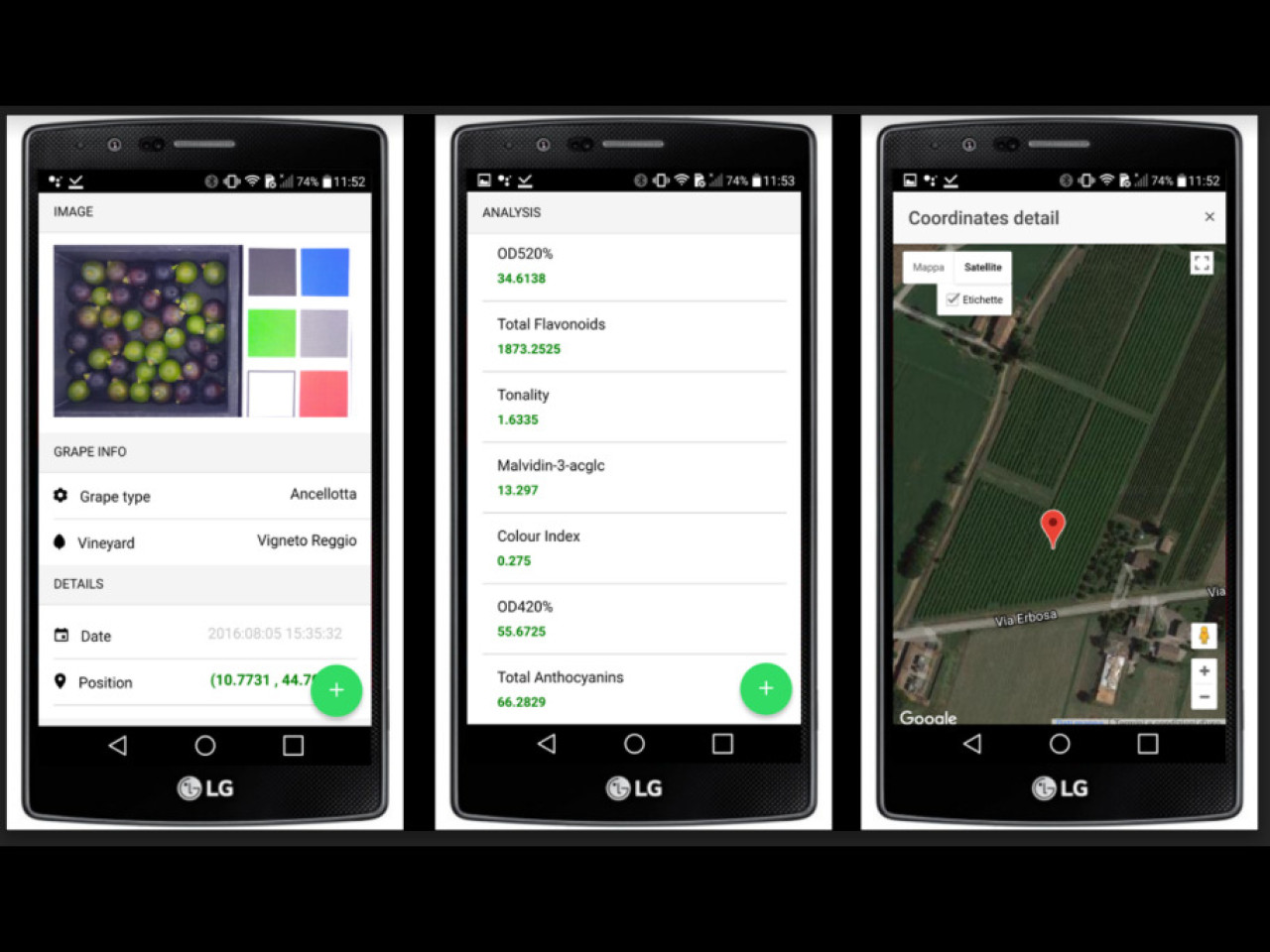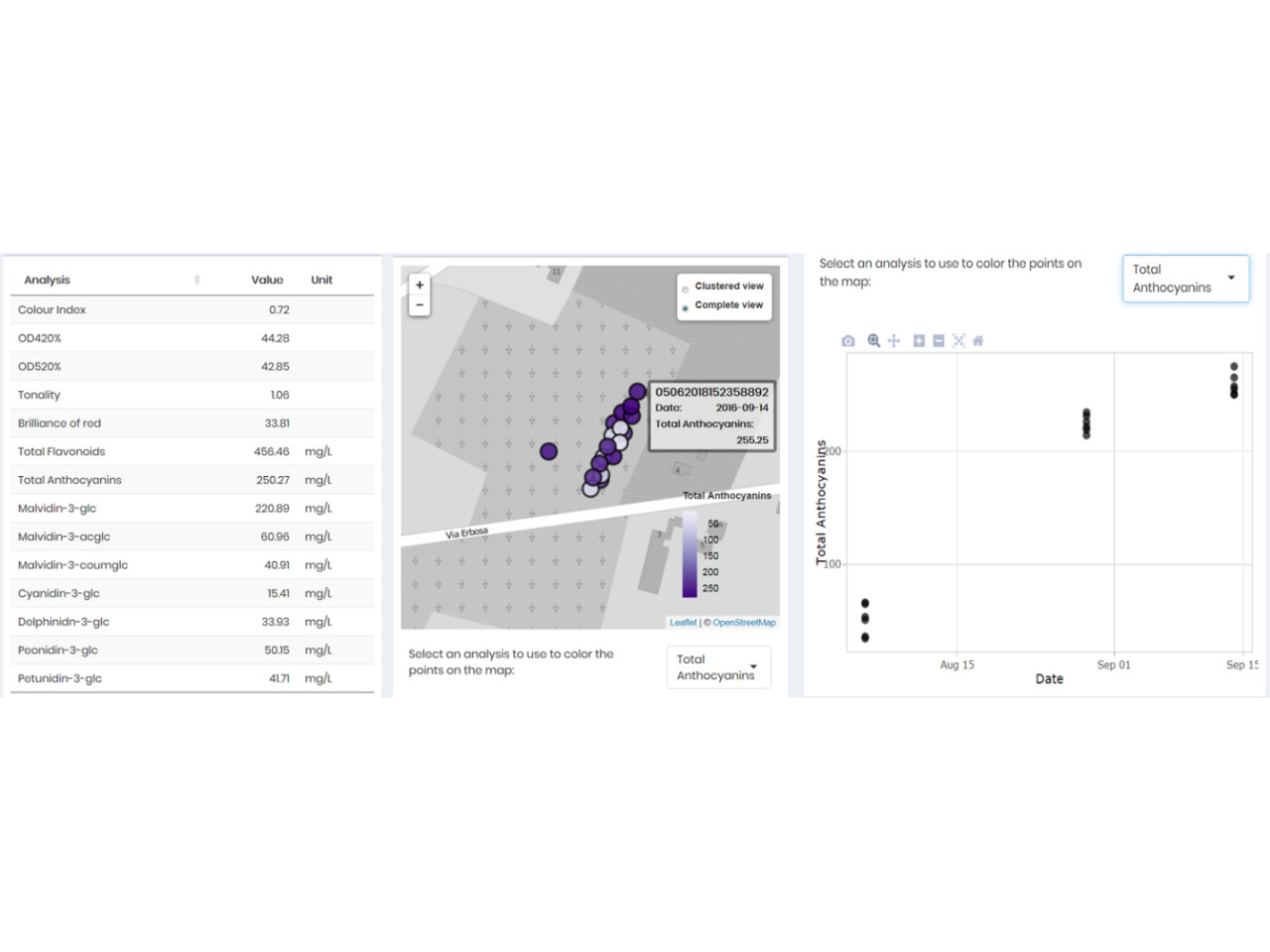The grape ripening degree at harvest is one of the main factors influencing the quality of wine. The parameters most frequently used to monitor the ripening degree of grapes are sugar content, pH, acidity, and phenolic composition. The latter is determined by means of analyses that require expensive equipments and qualified personnel. Alternatively, the winemaker performs a visual assessment of the colour; indeed, grapes colour is due to anthocyanins, which are the vegetable pigments whose content increases with the progress of maturation. However, visual evaluation is intrinsically subjective and therefore poorly reliable and reproducible. In this context we developed a smartphone-based device to acquire RGB images of grape samples which are automatically elaborated in real time, in order to provide an objective, rapid and low-cost measurement of the parameters related to grape ripening.
 Device operating scheme
Device operating scheme
The determination of parameters related to phenolic ripening of grapes is currently carried out using classical analytical procedures that require expensive equipment and qualified personnel. The innovative and advantageous aspects of the developed device can be summarized as follows: • Low-cost, speed and ease of use; • Real-time results: it is possible to quantify about 15 analytical parameters in a few seconds, directly in the vineyard; • Reduced costs for consulting at external laboratories; • Less hours dedicated to analyses and less use of chemical reagents.
• Analysis in vineyard in real time of different chemical-physical parameters indicative of the phenolic ripeness of the grapes; • Elaboration and visualization of maps and curves of maturation; the simplicity of execution allows to increase the frequency and the number of measurements, without requiring specific technical skills; • Storage of historical data (with date/time, GPS coordinates, colour parameter values) and possibility of data sharing; • Useful information for selective harvest in different areas of the vineyard .
 Screenshots of the smartphone app
Screenshots of the smartphone app
In-field determination of parameters indicative of the phenolic ripeness of Ancellotta and Lambrusco Salamino grapes
The device, developed as part of the POR-FESR SOSTINNOVI project, was used to collect images of red grapes samples of two different varieties of regional interest (Ancellotta and Lambrusco Salamino) at different stages of maturation during vintages 2016 and 2017. The same samples were analysed in the laboratory to obtain the reference values of various parameters indicative of the phenolic maturation such as, for example, color index, tonality, total polyphenol content, total anthocyanins, and different types of anthocyanins. The images were processed to develop a mathematical model that elaborates the information related to the colour of the grape samples. This model was implemented in a specific app that allows viewing in real time the parameters of maturation of the sample. In addition, a desktop application has been developed to perform the analysis of all the image data through a web interface, to export the data and to evaluate in real-time the phenolic maturation trend by displaying maps and curves of maturation. The obtained results demonstrate that the error associated to the prediction of the parameters of interest made by the device is completely compatible with the operational requirements.
BIOGEST-SITEIA Emilia Wine Sca Kode srl
It is necessary to expand the study with the construction and validation of calibration models for other red grape varieties, as well as to improve the robustness of the calibration models with samples coming from different harvesting years. In addition, the design of the device should be refined, adapting the image acquisition chamber to different smartphone models.
 Screenshot of the web interface
Screenshot of the web interface

